I am pretty excited this evening to bring you an interview with one of my absolute food heroes, Tamsin Carvan of Tamsin’s Table. From her 45ha property in the hills of Gippsland, Tamsin runs weekly lunches and a program of workshops, all of which use the produce from her own garden to bring friends, strangers and families together at her shared table.
Tamsin’s approach to cooking is exactly how I strive to eat and cook. Hers is simple seasonal food that is ultimately the sum of its parts – practised techniques, beautiful fresh produce and then the conviviality of a shared table. And although I’ve not yet been to one of her lunches, hopefully it won’t be too long until I too get to sit at that table. In the meantime, her programs and blog inspire me to make the lunches Tim and I host at our own farm better and brighter. Thank you Tamsin for that and for taking the time to write to me with the below e-interview.

Both images above bySarah Wood
Hello Tamsin, thank you so much for joining us here today! Firstly, would you mind giving us a bit of background on Tamsin’s Table, the farm and how you came to be living and cooking there? (how’s that for a big question!).
Thanks so much for having me on your beautiful blog Sophie and yikes that is a big one!
Well the very potted version is that I ended up here, by a most circuitous route, because 15 years ago I asked myself a question that I committed myself to taking seriously: what would it take to eat the way I really want to eat?
There were a lot of things that led to that point – working in advertising for ten years with snackfood and confectionery clients, a desire not to consume any more chemicals than I needed to, a growing awareness of the ways in which our food production system was letting us down, reading lots of old Italian cookbooks, and also the way I felt in my own body. I felt like the food I was eating at the time was not acting in my best interests!
This in turn prompted a whole series of decisions that in hindsight seem nuts but somehow at the time made perfect sense…such as quitting my well paid job in Sydney, moving interstate (twice) and buying a run down 113 acres when I had never done a day’s farming in my life.
But I’m very glad that the younger me was crazy enough to do all that because now we do eat exactly how we want: from the garden, with the seasons, with no chemicals, by our own toil, with animals living as they are meant to live. We live frugally, on a fraction of the income that I used to have, but life is full of luxuries – chest freezers full of the most incredible huge cuts of meat, cupboards full of preserves, armfuls of asparagus or whatever else is in season and of course this space, and the green hills, all around.
I have heard so many wonderful reports from your lunches, everyone seems to come away completely flush with beautiful food, great company and convivial surroundings. What do you think it is that you’ve captured here that appeals so much?
That is wonderful to hear, thank you! I suspect that maybe we have a different starting point to many other places you might go to eat. I know it sounds a little crazy…but even though we are all about the food, it’s not where we start. Rather we put a lot of thought and time and effort into what makes for a good meal, which of course includes the food but actually starts with people and the environment. So, feeling welcomed, comfortable, relaxed and able to be yourself, but also stimulated and engaged by the people around you. I think our setting helps in this because it is a step out of everyday life, and this along with knowing that they will be sharing a table with others, maybe makes people more receptive and open. The food then becomes the next layer of enjoyment and a catalyst for talking and laughing and opening up – that’s why we serve nearly all the food on platters rather than ‘plating up’; the simple act of having to pass around these big platters opens up the table and encourages everyone to interact. There are so few opportunities these days to meet people outside your social circle in a really comfortable way, to have unexpected conversations; I think that’s one of the reasons we have so many regulars who come back again and again. Some of them have now formed independent friendships with other regular guests. One of our regulars, Chris, describes her experience here as one of fellowship. That word makes me pretty happy. My hope and dream is that everyone who comes here will leave feeling nourished in the full sense of the word.
What’s the rough idea behind the food you serve at your lunches? I imagine it’s more big-flavoured, made-with-love, seasonal food rather than foams and deconstructions…!!
Ha yes, no foams and deconstructions here. The foundational principle is that the produce and meat is sourced from our farm and garden. That’s how we feed ourselves and that’s how I want to feed others too. Some people tell me that this in doing this I’m making my life harder than it needs to be and certainly it’s not always easy, but I wouldn’t do it any other way. By committing to this idea, which by definition creates limitations, you are forced to be resourceful and frugal which in turn sets the imagination and creativity free. It’s the best thing I’ve ever done for my cooking.
The food I make is very simple, peasant food really, but it’s made with a lot of care and in a spirit of fun and enjoyment. I don’t like flavours to be complicated – it detracts from enjoying the main ingredients that we put a lot of effort into growing! As the Italians have been trying to tell us for a long time the quality of the produce really matters, not just where and how it was grown but also when it is at its best or best suited to different uses. So making a distinction between the rhubarb stems that are good for stewing and the ones that will roast up beautifully, that kind of thing. I’ve learned over the years that those details really count.
At the same time as I take those details seriously, we are not at all precious about food. In the end it’s about doing the best with what you’ve got. I’m quite ambivalent about the culture of celebrity and status that goes with cooking at the moment. On one hand it does draw attention to what we are putting in our mouths and where it comes from, but it can also feed a sense of anxiety or inadequacy about what counts as good enough.
Image above and below, Tamsin Carvan
How/why did you become interested in cooking and sharing your food in this way?
Well it started with curiosity really – I’d read all these wonderful simple recipes in old Italian cookbooks that would literally have three ingredients and wonder why I couldn’t reproduce those flavours with my supermarket bought ingredients. It started me off with growing things for myself, and honestly once you start doing that you are spoiled forever! Although I have the hugest admiration for the growers out there who are doing their best to get good quality food to lots of people, the reality is that food really does taste better, much better, when it is freshly picked.
I really got stuck into food gardening when Martha was a baby and there came a point where we were producing more food than we could consume but too little to set up a stall at a farmers market.. Plus if people were going to eat it, I wanted them to eat it just as we did, fresh from the garden. And that’s how Tamsin’s Table was born.
What have been some particularly popular recent events/menus?
Happily all our events seem to well received – for example our two Field and Flourish dates with Cecilia Fox sold out in 36 hours – but our lunches are the mainstay of what we do here. I’m so grateful to all our guests for their amazing support. Next year the lunches will change format a bit, we try and keep in interesting!
As for popular menus, during winter we served our own rather too free range turkeys for a while there and I know everyone loved tasting turkey that was really moist and full of flavour. Even if I did make rather a spectacle of myself trying to carve them!
The dishes people really seem to love are the ones that are incredibly simple yet full of flavour. I absolutely love it when people can taste the difference that really fresh ingredients make because hopefully it will inspire them to throw a few seeds in the ground. For example, over summer we did a rustic pesto of basil, raw almonds, garlic, raw zucchini and green beans. It was nothing to do with the recipe (which barely even rates as a recipe) and everything to do with the vibrancy and intensity of the garlic and basil; both were particularly delicious last summer. Another fave was a dish we served a few times this winter, a creamy gratin of Brussels sprouts leaves, kale and chard – we’ve had more requests for that recipe than probably anything else I’ve ever cooked. Again it was ridiculously simple but the was just that the leaves were so sweet after the frosts, which we don’t normally get up here on our hill. So that was a wonderful thing for us to experience too, I’d never tasted them that sweet before. The toasted apple wood ice cream is always a hit (I have guests who want me to start making it in tubs to take home) and of course the borage ravioli which we come back to again and again. That’s a perfect example of a recipe that just sprang from making good use of ingredients to hand – so where you might normally expect to see ricotta, we use leftover sourdough soaked in water then mixed with a little yoghurt. It is so fresh and light and now it’s my preferred base for a ravioli filling.
Now that winter has truly given way to spring, what kinds of food are you craving and cooking yourself?
At the moment I can’t stop thinking about tangy flavours, that’s all I want! So a bit salty and a bit citrus-y but combined with something filling and nourishing, like risotto. Last night I made an asparagus risotto that really hit the spot, with tons of asparagus just picked from the patch thrown in at the very last so they were still crisp, and with lime zest and a used vanilla bean in water instead of stock. We sautéed raw almonds in butter and lemon juice and tossed them over at the end. I love meals like that that spring from the sheer exhilaration of having something so fresh and lovely from the garden to use.
When thinking up workshops for your event calendar, or menu planning for the regular Sunday lunches; do you look to favourite cookbooks, favourite food blogs or the garden for inspiration? Or a combination of all three?
For lunches, it’s a combination, although the garden comes first – it has to because that determines what ingredients we have to work with. Of course we try and plan ahead but that is easier said than done as I’m sure anyone who gardens knows only too well. It’s hard to explain but I also have a really clear sense of the sensations I’m after, how I want people to feel during and after eating. It’s one of the reasons that you’ll never find a really heavy or super rich dessert on our lunch menu – I believe lunch should end with a lift rather than a thud.
When it comes to workshops, it is usually a collaborative process with guests. They tell me what they would like to learn more about and we create a workshop – the sponge cake workshop and the upcoming bottling class would be perfect examples. The only workshop that is a regular fixture in the calendar is our Kitchen Harvest class which takes people behind the scenes of our lunches. So we spend a full day harvesting ingredients from the garden, and preparing some of our favourite dishes together before sitting down to eat at the long table. It’s great for people who want to delve a bit deeper into seasonal eating and how to get the best out of their ingredients. It’s always really fun and rewarding to share knowledge, experience and stories with each other, and again we have regulars who come back for a class each season.
Image by Sarah Wood
And would you mind sharing two of your favourite cook books and/or blogs?
I’m going to interpret ‘favourite’ as ‘most influential’, because my favourites change all the time! Two of the cook books that really shaped my thinking about food and cooking from the ground up are the River Café Cook Book Green by Rose Gray and Ruth Rogers, and In Nonna’s Kitchen by Carol Field. They are both about using simple seasonal ingredients, but getting the most from them. They also have lots of good discussion about technique, which as any self taught cook knows, is gold!
Blog wise, I really like David Leibowitz – he’s always really honest and educational and good for problem solving, and I guess like everyone else I can’t help but be drawn to Local Milk by Beth Kirby – she’s captivating isn’t she, and amazing at tapping into and inspiring a certain mood. And yours of course Sophie!
Finally; would you mind sharing five tips for how to plan a really great, easy lunch or dinner party menu?
Grow your own garlic and herbs. It makes all the difference to taste and if you’re inclined to be a bit last minute like me it makes life very easy too. A neighbour of mine grew 100 heads of garlic in an old tyre last year, it’s so space efficient and undemanding, and one thing that many of us could easily become self sufficient in.
Choose simple food and execute it well and with a sense of generosity and abundance rather than go for complicated things that end up stressing you out. It’s the flavours and textures together that create the sense of specialness, not things being tricky or difficult (or, for that matter, expensive).
Build a repertoire of things that benefit from being pre prepared or from being left alone for long periods while flavours build and develop. For example, a braised pork shoulder is amazing – the longer you leave it the better it gets. All you need to do before you sit down to eat is make a quick sauce from the juices. Onions in olive oil and butter are another (sometimes I leave these to caramelise for hours and hours at snail’s pace on the side of the wood stove). Then when you are ready, add a few currants, some chopped herbs and some beautiful fresh nuts and you have a delicious pasta sauce in seconds. And of course a custard based ice cream is always a winner. The day before infuse the milk with whatever flavours you are using and let it sit for a few hours before making the custard; this goes into the fridge overnight so that the flavours can settle and mingle and then all that’s required the next day is a quick churn. I always make sure that to the greatest extent possible the dessert is completely ready to go by the time we sit down at the table. I don’t know about you but by the time I’ve had a few glasses of wine the last thing I feel like doing is rushing about trying to get a chocolate soufflé to rise.
I know I’ve only listed four things here but I reckon this last one counts for two. Make sure at the end of the night you crack a bottle of bubbly and get everyone in the kitchen to help you wash up. No mess to wake up to, plus that’s when the best conversations happen.
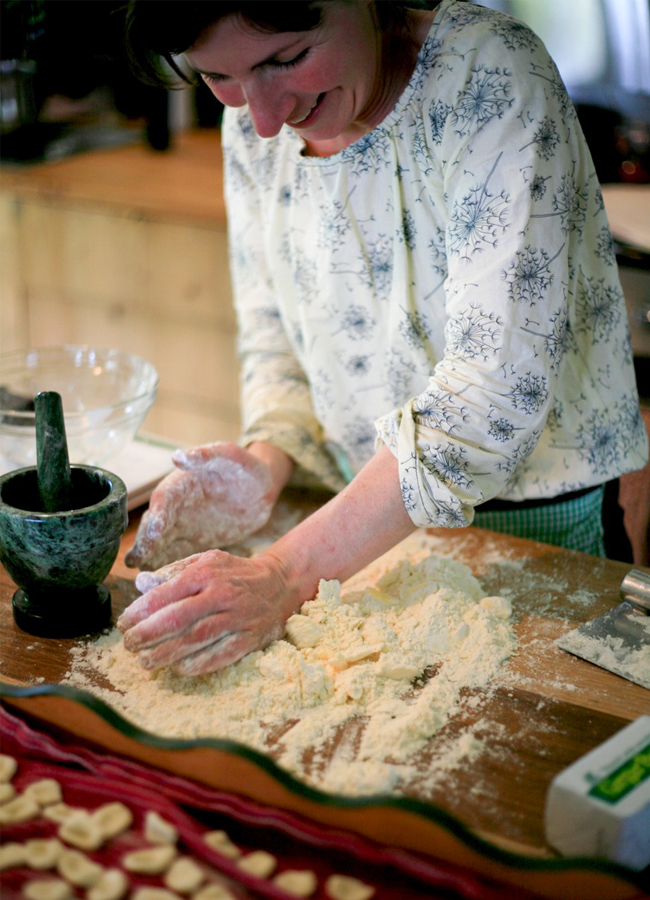


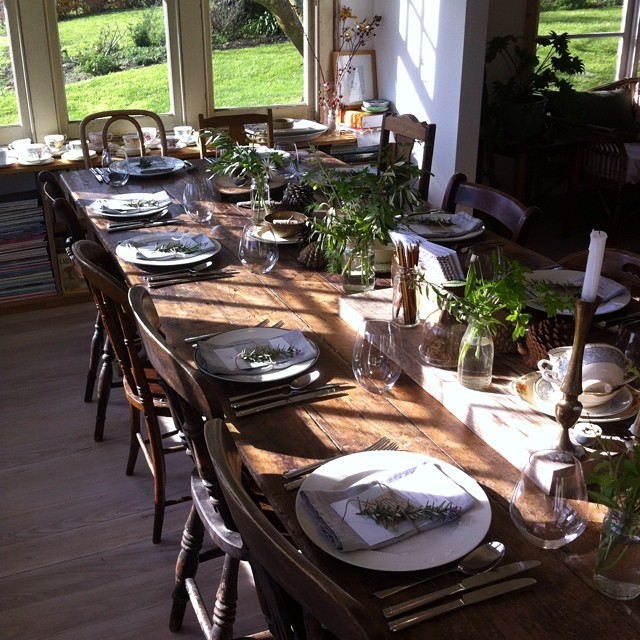
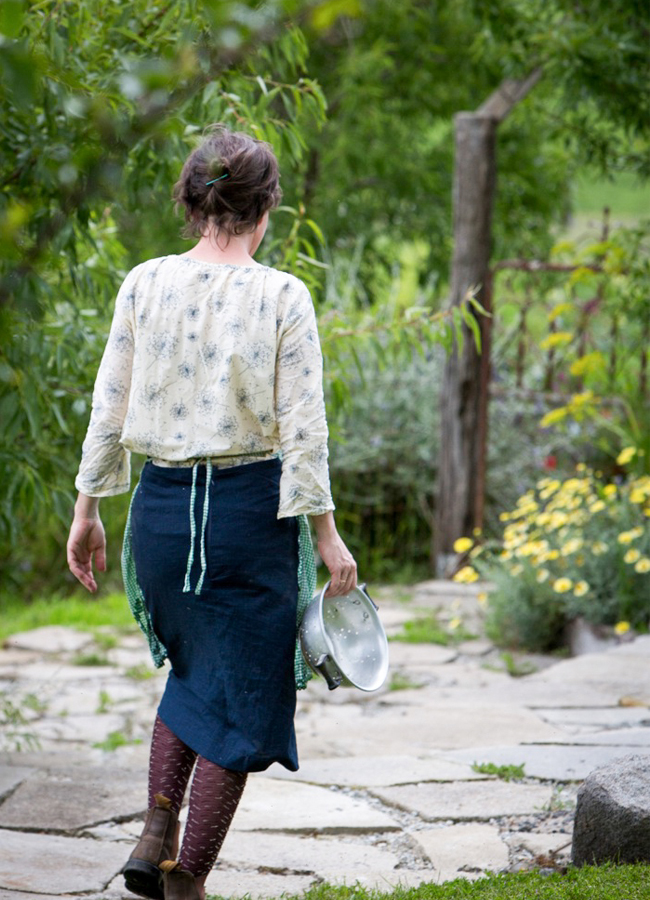


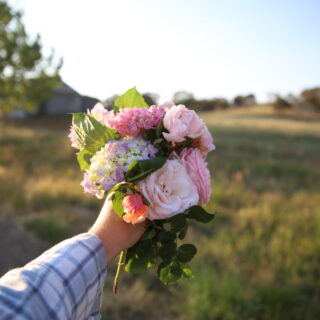
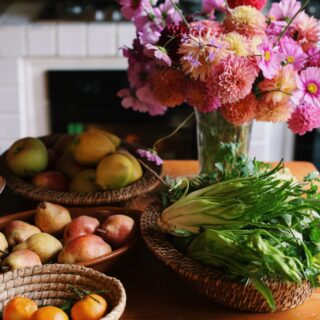
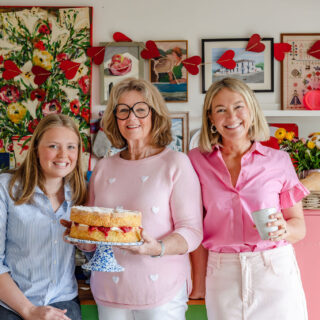
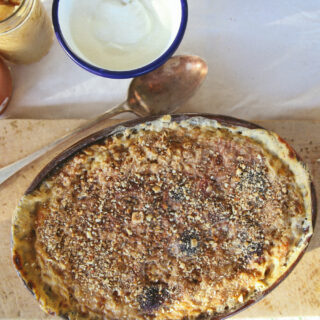

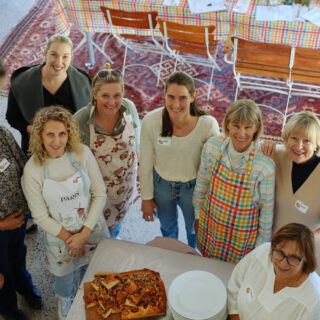
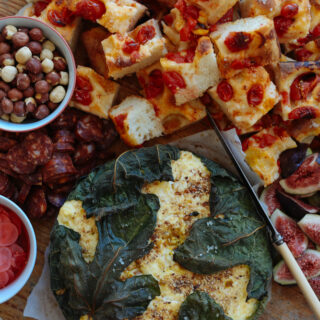

Isn’t that funny….before I got reading further on I thought to myself how similar to Local Milk Tamsin’s photos looked. Lovely story.